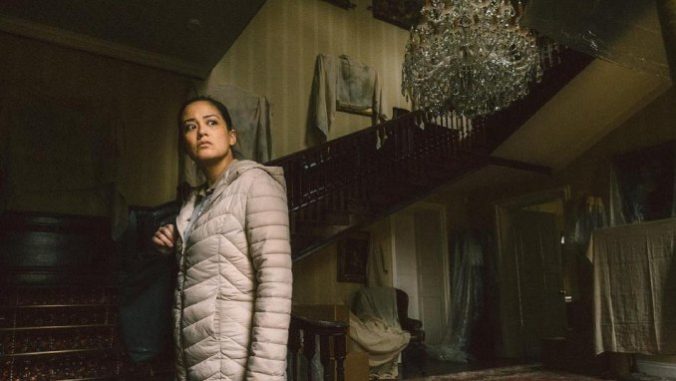Multigenerational Immigrant Horror Raging Grace Is an Exciting, Compelling Debut

Horror stories told within the immigrant experience have always been a potent vehicle for exploring fears both collective and individual, and there’s arguably never been a better time for filmmakers to explore this particular subgenre. From His House to Nanny, horror stories about immigrants and refugees simply fighting to exist in a world that pulls them in multiple directions viscerally remind us of our own innate fears of alienation and dehumanization, and say something larger about a world full of hostility toward the presence of an Other. Done well, these kinds of stories are both timely and timeless, an effective fusion of the contemporary and the eternal. With his debut feature Raging Grace, writer/director Paris Zarcilla sets out to tell exactly that kind of story, and succeeds by melding familiar elements into something personal yet consistently relatable. Thanks to a persistently effective sense of atmosphere and a great cast, these elements coalesce into a compelling, often unpredictable horror story, and announce Zarcilla as an exciting genre voice to watch.
Joy (Max Eigenmann) is a Filipino immigrant living in England, doing her best to carve out a life with her mischievous daughter Joy (Jaeden Paige Boadilla) while scraping together enough funds to legitimize her permanent residency in the U.K. It’s a hard life, one in which Grace and Joy often get by through squatting in the upscale homes Joy cleans while their owners are out of town. Just when her resources begin to run out, Joy gets a call that might change everything, a request which sends her to an elegant country estate where a wealthy man (David Hayman) is slowly dying in the care of his niece Katherine (Leanne Best). With concerns of her own to attend to, Katherine offers Joy the job of cleaning the massive house and caring for her ailing uncle, with a healthy under-the-table payday on offer. Joy takes the job, sneaks Grace into the house, and gets to work, unaware that something much more grim than a dying man is lurking inside.
Zarcilla sets up a clear juxtaposition that will pay off in big ways throughout the film, sending his poor immigrant characters to live and work in the sprawling stately home of a wealthy white landowner. The home itself, and the stuffy ways of its owners, root the story in a satisfyingly Gothic legacy that calls to mind classics like The Turn of the Screw, another tale of a servant trapped in a house of increasingly dangerous mystery. Zarcilla clearly knows these kinds of stories and how to play by their spooky rules, delivering the Gothic goods with a deft hand, but he also never forgets that he’s making a modern story about two people just trying to make a life for themselves in a world that would rather push them into a corner. Joy and Grace never feel like characters trapped in a story that’s not their own, or characters from another time, place or subgenre. Instead they are lively, tough, fully-formed characters pushing at the borders of the world around them. While the threats of the story emerge out of the Gothic tradition, the key tension of the film comes from the mother and daughter bond at its core.